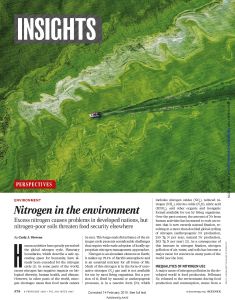Join getAbstract to access the summary!

Join getAbstract to access the summary!
Carly J. Stevens
Nitrogen in the Environment
Excess nitrogen causes problems in developed nations, but nitrogen-poor soils threaten food security elsewhere.
Science, 2019
What's inside?
Vital for agriculture, nitrogen can also pollute the water and air, and harm human health.
Recommendation
Nitrogen in the environment is a two-edged sword. It’s vital for crop production, but overabundance in its reactive form can pollute water and air, and harm human and ecosystem health. In this article, UK ecologist and biogeochemist Carly J. Stevens offers an easy-to-understand summary of how humans have dramatically altered the distribution of nitrogen on Earth in ways that are detrimental to human health and the environment. She suggests how further actions can reduce reactive nitrogen’s harmful effects while boosting crop production in nitrogen-deficient regions.
Summary
About the Author
Carly J. Stevens is a plant ecologist and soil biogeochemist at Lancaster University’s Lancaster Environment Centre in Lancaster, UK.
















Comment on this summary